In today's summary:
- Kakhovskaya HPP is destroyed and flooded. Russia and Ukraine blame each other;
- Ukraine regains control over the surroundings of Bakhmut;
- As a result of the shelling, an ammonia pipeline in the Kupyansk region was damaged;
- Three conscripts died in the Belgorod region;
- The Ministry of Defense of the Russian Federation for the first time announced the "destruction" of Leopard tanks;
- The Ministry of Defense also announced Russian losses for the first time since January.
Destruction of the Kakhovskaya hydroelectric power station
In the early morning of June 6, the Kakhovskaya hydroelectric power station completely collapsed and went under water. Ukrhydroenergo said that the station could not be restored. There were no reports of casualties.
In the first hours after that, the coastal regions of Novaya Kakhovka were flooded. According to Prime Minister of Ukraine Denys Shmygal, another 80 settlements were in the flood zone. A video from the Korabel district in Kherson shows that the streets are flooded with water that reaches people up to their knees. The city of Oleshki was almost completely flooded, the Russian "administration" reported this.
The Ukrainian operational command "South" said that the hydroelectric dam was blown up by Russian troops. Mikhail Podolyak, adviser to the head of the Office of the President of Ukraine, specified that, according to preliminary data, this was done by the 205th motorized rifle brigade of the Russian Armed Forces.
The Russian-appointed "mayor" of the occupied Nova Kakhovka, Vladimir Leontiev, said that "at about two in the morning a series of numerous attacks were carried out on the Kakhovka hydroelectric power station," without specifying from whose side. The Investigative Committee of Russia opened a criminal case on the attack, saying that the destruction of the station occurred "as a result of criminal actions by the armed formations of Ukraine." It is noteworthy that a week earlier, the Russian government issued a decree, according to which it is allowed not to investigate accidents at hazardous facilities that occurred as a result of "military actions" and terrorist attacks, including in the occupied territories.
President of Ukraine Volodymyr Zelensky said that the dam, like the entire hydroelectric power station, was controlled by Russia, and it was impossible to undermine it through external influence, including shelling. The President also pointed out that the dam had previously been mined by the Russians.
Later, Zelensky said that, according to a Ukrainian intelligence report, the Russians deliberately blew up the dam of the Kakhovskaya hydroelectric power station, but acted chaotically, allowing their own equipment to be flooded. "Burning the dam did not affect Ukraine's ability to de-occupy its territories," the president said in a statement.
OSINT analysts studied satellite images of the HPP before and after the accident and suggested that the dam could have collapsed even before the disaster due to previous damage. Serious damage to the dam is already visible in the images from June 4 and 5, compared to previous days. Attacks on the Kakhovskaya hydroelectric power station and the dam were repeatedly carried out during the hostilities in the Kherson region, that the dam was in danger of destruction, they said last fall.

At the same time, residents of Nova Kakhovka in the city’s Telegram channels and chats reported in the morning that they heard sounds similar to explosions.
Ukrainian military expert Serhiy Grabsky told The Insider that the destruction of the Kakhovskaya hydroelectric power station would make it difficult for Russian forces, as there was a threat of flooding in the direction of the Kinburn Spit .
“Ukraine has every chance to advance in that direction and jeopardize facilities in the Crimea . In the event of a breakthrough of Ukrainian troops to the coast of the Sea of Azov , Russian forces will be in a more difficult position, because they will actually have one or two narrow isthmuses that connect them to the Crimea. This will greatly complicate defensive actions. They are driving themselves into a trap. They have been building these defensive structures on the coast for so long, and at one moment it all goes under water. They have effectively washed away their defensive line."
According to Grabsky, the only reasons Russian forces could have blown up the dam were terror and the destruction of critical infrastructure.
“The Armed Forces of Ukraine already hit objects at a distance there, no one was going to cross there. We controlled some territory on the left bank, but only reconnaissance and sabotage operations were carried out there. Sending mechanized and tank units there to the raw defenses of the enemy is suicide. Ukraine simply does not have such a number of pontoon-bridge regiments and other amphibious assault vehicles. Yes, we are getting tank bridge layers, but this is to overcome engineering structures on dry land and that's it.
Judging by some of the footage, part of the Russian defensive positions really suffered. So, the author of the Thirteenth Telegram channel published a photo of Russian servicemen waist-deep in water, providing it with the comment “sailed out, everything is fine.” Footage of surfaced Russian anti-tank mines TM-62 and a video of their detonation are also published.
Deputy Prosecutor General of Ukraine Viktoria Litvinova said on the air of the telethon that about 42,000 people need to be evacuated from the disaster zone, 17,000 of them are in the territory controlled by Ukrainian forces. She warned that due to the destruction of the hydroelectric power station, problems with the water supply of the occupied Berdyansk, Crimea , as well as settlements in the Zaporozhye and Dnipropetrovsk regions may begin.
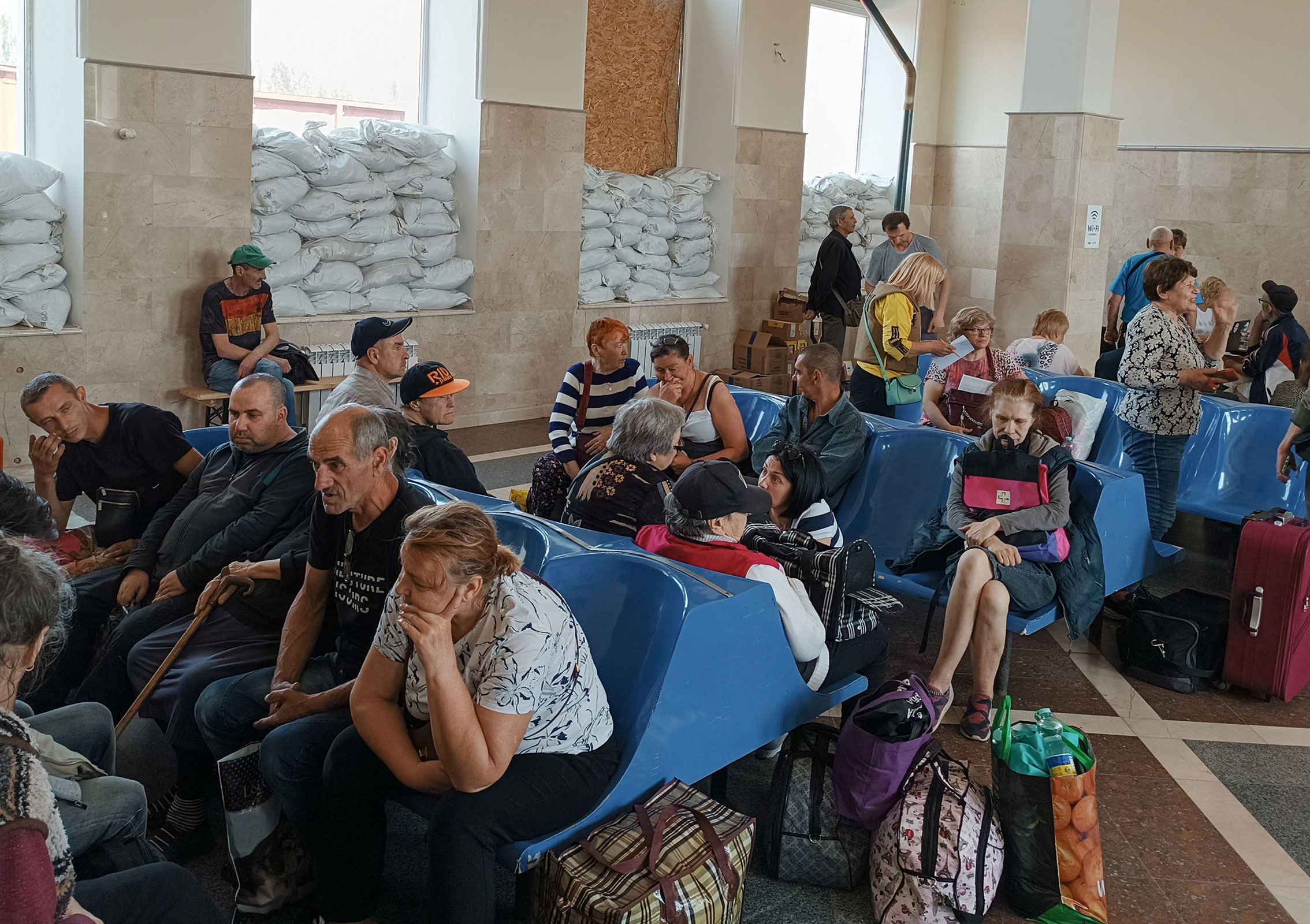
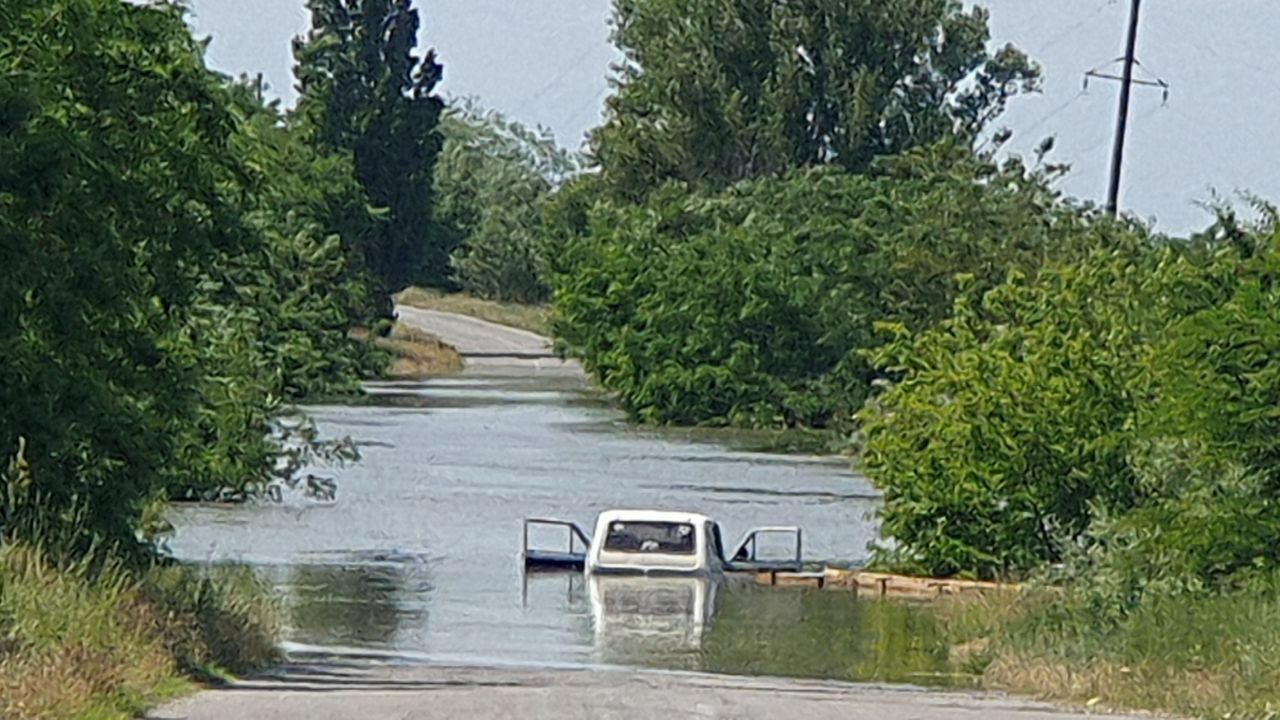
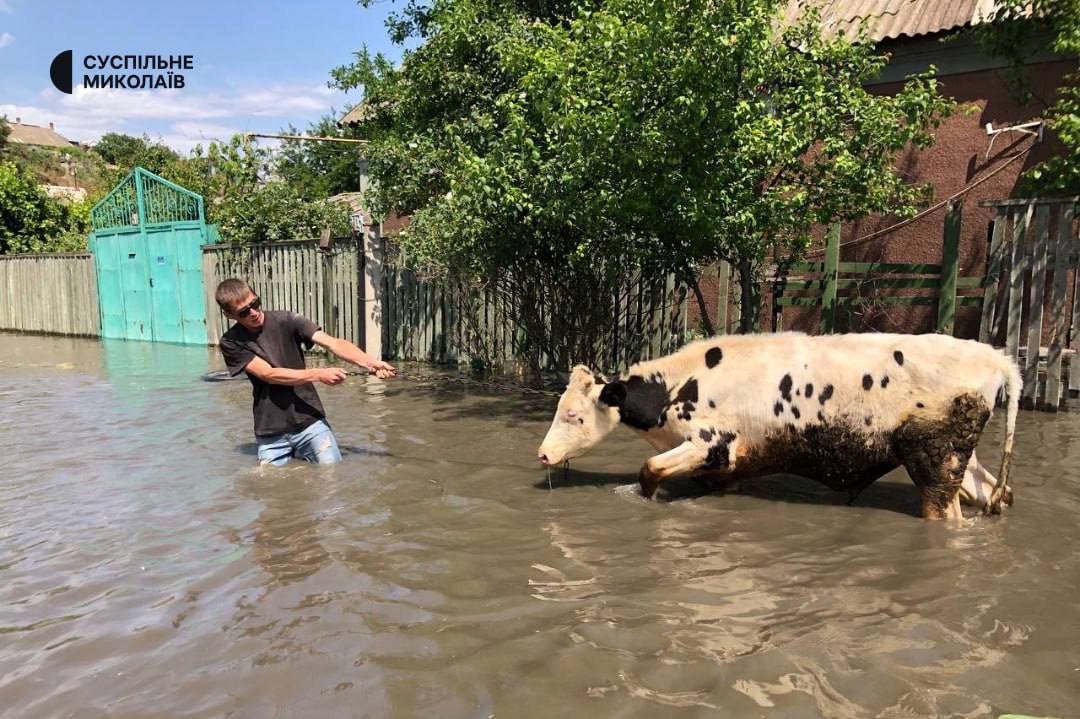
The head of the occupation administration of the Kherson region, Volodymyr Saldo, said that there is no serious danger to the region and mass evacuation is not required. At the same time, TASS reported on the beginning of the evacuation from the settlements of the Novokakhovsk urban district . Izvestia published a video in which Saldo says that in Nova Kakhovka life goes on as usual and people "calmly move along the streets." At the same time, through the window where the official is standing, you can see the city palace of culture, the first floor of which is flooded, as well as the square in front of the building.

At an emergency meeting of the National Security Council, which was chaired by the President of Ukraine, the audience was informed that 150 tons of engine oil had entered the Dnieper and there was a risk of leakage of another 300 tons.
About 300 animals died on the territory of the Kazkova Dibrova recreation center in Nova Kakhovka . As reported on the Facebook page of the complex, when employees came to work at 6 a.m., the area where the animals were was already completely flooded. Only a few swans and ducks survived. “The park is mined, all roads are blocked, the evacuation of animals was impossible,” the report says.
The situation at the front
On June 6, the Russian Defense Ministry issued a statement that Ukrainian forces had been undertaking a “long-promised offensive” for three days, but all their attacks were successfully repelled.
Military expert Oleksandr Kovalenko told The Insider that he does not see a large-scale offensive by the Armed Forces of Ukraine, however, the actions of Ukrainian forces have noticeably intensified in the Bakhmut and Zaporozhye directions . According to the expert, since the beginning of May, Ukraine has been working on the return of the dominant heights around Bakhmut, which will allow control of settlements to the northwest and northeast of the city ( Kleshcheevka, Berkhovka, Yagodnoe and others). In addition, fire control over the northern and southern sectors of Bakhmut itself is returning.
“When Prigozhin announced that he allegedly completely captured Bakhmut , he made his statement in the area of the railway station, while the area in the triangle of Tchaikovsky and Karsunsky, which is the entrance gate of the T-0504 highway, was not under the control of Russian troops. To say that you control a city when you do not control the entrance gate to one of its sectors is, to put it mildly, unprofessional, and here we see the result of this. Prigozhin reported that he had captured Bakhmut , and began to withdraw his units, replacing them with less professional elements of the Russian occupation forces, and Ukrainian forces took advantage of this.
When Prigozhin began to withdraw his units, the flanks were already beginning to collapse, and the collapse of the flanks indicated that the Ukrainian defense forces were receiving priority and the initiative to impose their strategy and tactics of warfare outside the city. The city battles themselves are not so much of interest to us now as the advance to the dominant heights, and after that, of course, the cutting of the main logistical arteries.
In the Zaporizhzhia direction, according to Kovalenko, one can observe systematic reconnaissance in combat, which Russian forces cannot interfere with due to lack of resources.
“Despite the fact that they built some lines of defense and trenches in the Zaporozhye region, the left-bank Kherson region, they, in fact, cannot deter attacks. They lack the potential. The left-bank Kherson region and the Zaporizhia region differ from the Donetsk and Lugansk bridgeheads in that they have the worst equipment of units in terms of equipment to date. As a result, even this huge number of trenches will not bring results.
Mutual shelling and sabotage
The pipeline with ammonia was damaged in the Kupyansky district as a result of shelling from the Russian side, this was announced on the evening of June 5 by the head of the Kharkiv Regional Military Administration (OVA) Oleg Sinegubov.
The Air Force of the Armed Forces of Ukraine reported that on the night of June 6, Russia fired 35 cruise missiles on Ukrainian territory and all of them were shot down. The Ministry of Internal Affairs of Ukraine reported that seven residential buildings, one high-rise building, infrastructure facilities, office space were damaged in the Kiev region, and the power grid was also cut off.
The Governor of Belgorod Vyacheslav Gladkov wrote that on the eve of another shelling, the Graivoronsky urban district was subjected to fire, and a 14-year-old boy was wounded in the village of Glotovo . As a result of the shelling of the Shebekinsky urban district, a man received a shrapnel wound.
Gladkov also stated that there was “no enemy” either in Novaya Tavolzhanka or in the Belgorod region in general. On June 6, the Russian Volunteer Corps published another statement stating that “Mr. Gladkov has lost control of the situation: marauders are operating in Shebekino , Novaya Tavolzhanka has simply been abandoned.”
Losses
Three conscripts from the Sverdlovsk region died in the Belgorod region on June 1: a shell hit a car with soldiers. This was reported to E1.RU by the Sverdlovsk Ombudsman Tatyana Merzlyakova. Seven more people were injured, two of them in serious condition. Earlier it was reported that since the beginning of the war in the border areas of the Belgorod region, at least seven conscripts have died. By law, conscripts should not be in a war zone.
The Russian Defense Ministry for the first time announced the "destruction" of Leopard tanks supplied by Germany to Ukraine. As stated in the report of the department for June 5, the Ukrainian side lost a total of 1.5 thousand military personnel and 28 tanks, including eight Leopards, in the South-Donetsk (Ugledarsky) direction.
The MoD later released a video allegedly showing the destruction of "foreign armored vehicles." The pro-Russian Teleram channel “Military Informant” doubted the veracity of the video, pointing out that the destroyed equipment in the video of the Ministry of Defense is similar to John Deere combine harvesters and the John Deere 4830 tractor, which are popular in Ukraine.
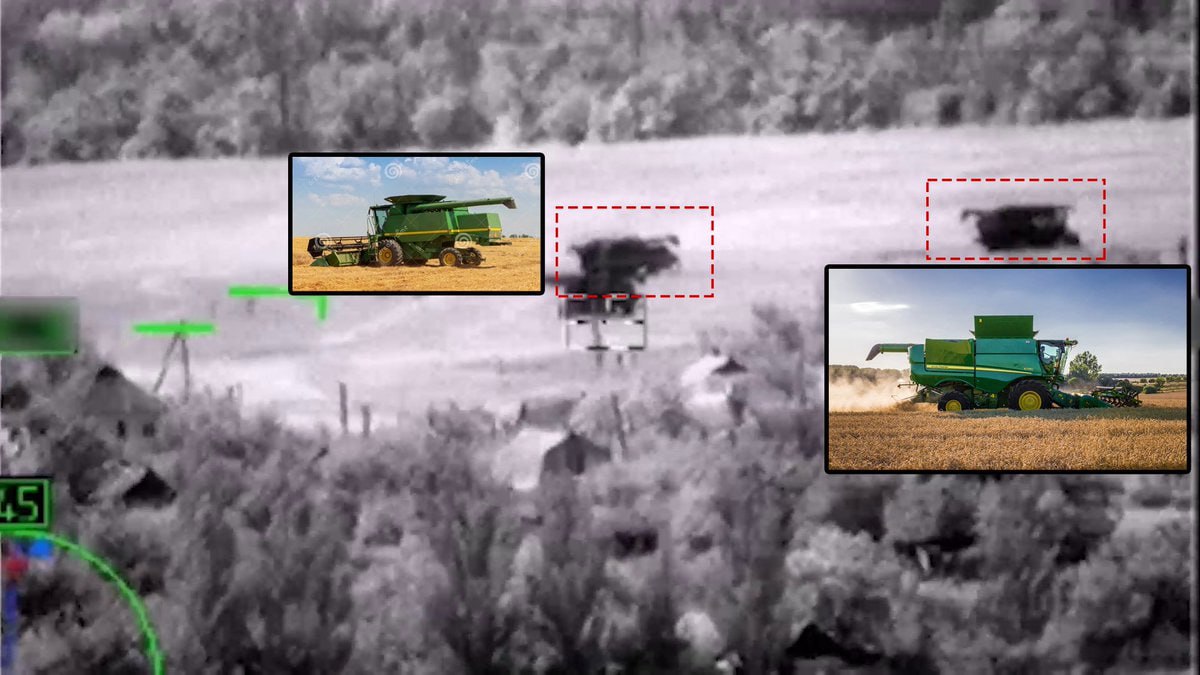
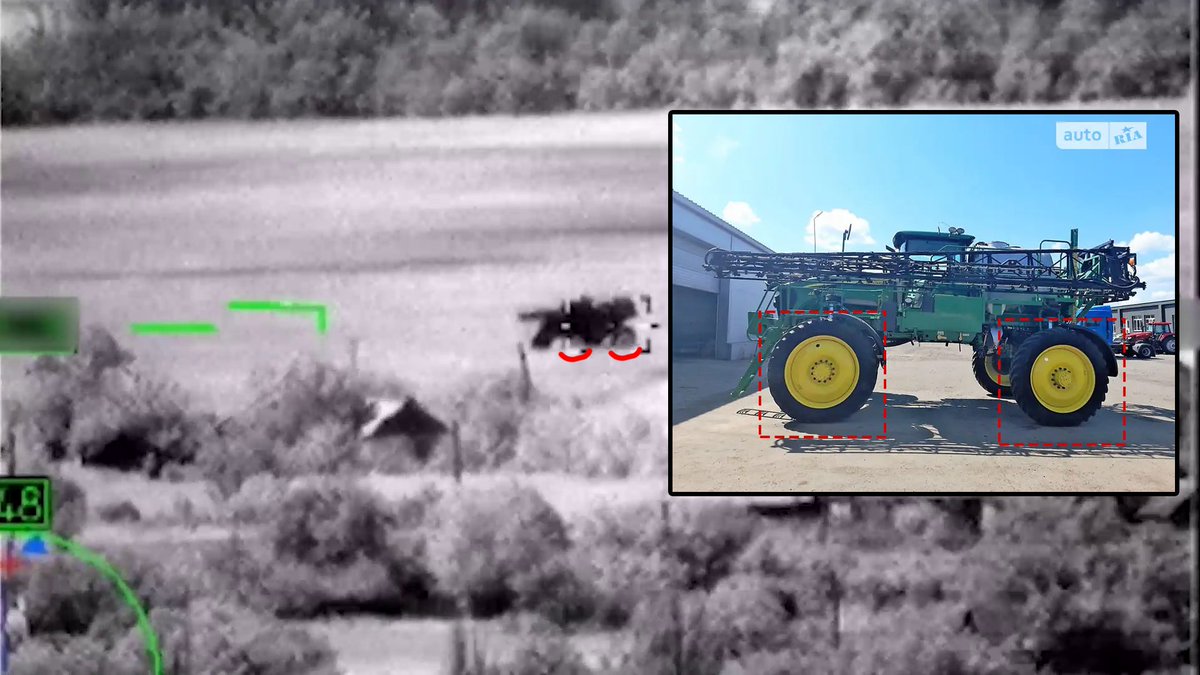
In another statement, the Russian Ministry of Defense says that over the past three days, Ukraine has lost more than 3.7 thousand military personnel, 52 tanks, 207 armored combat vehicles, five aircraft, two helicopters and more than 50 drones in battles in all directions.
For the first time since the January strike on the location of those mobilized in Makeevka, the Ministry of Defense reported losses on the Russian side. It is alleged that 71 Russian servicemen were killed and 210 injured in three days.
Armaments and military equipment
Serbian President Aleksandar Vucic, in a conversation with the Financial Times , allowed the transfer of Serbian weapons sold to third countries to Ukraine. “What is our alternative? Not to produce them? Don't sell?" asks rhetorically the Serbian leader, who before the full-scale invasion of Ukraine was considered the main ally of the Kremlin in the Balkans. Previously, researchers noticed Serbian missiles for the Grad MLRS with an extended range (40 km against the standard 20) in service with the Armed Forces of Ukraine.
Sources from The Australian Financial Review report on the discussion of the delivery of F / A-18 Hornet fighters to Ukraine, which were previously intended for decommissioning. The talks began with US approval after Washington allowed the allies to transfer American-made combat aircraft to Ukraine. Back in April , The Drive wrote that Australia had "dozens" of upgraded F/A-18s in storage, which were in good condition. The material says that these aircraft are even better suited for Ukraine than the F-16, for example, because they are designed to work on aircraft carriers in difficult conditions, which means they will also feel better on Soviet airfields with outdated infrastructure.
Meanwhile, in Ukraine, they continue to refine the existing equipment. There are new photos of the so-called "BMPV" – a captured T-62 tank, on which a turret from a BMP-2 infantry fighting vehicle with the ubiquitous Kontakt-1 dynamic protection is installed. This vehicle can fire the 30mm BMP-2 automatic cannon without using scarce 115mm ammunition for a Soviet tank.

About the main events of the war on June 5 – in the previous report: “ The Armed Forces of Ukraine are advancing near Ugledar, Kadyrov and Prigozhin are eager to defend the Belgorod region. What's happening on the front lines ."


